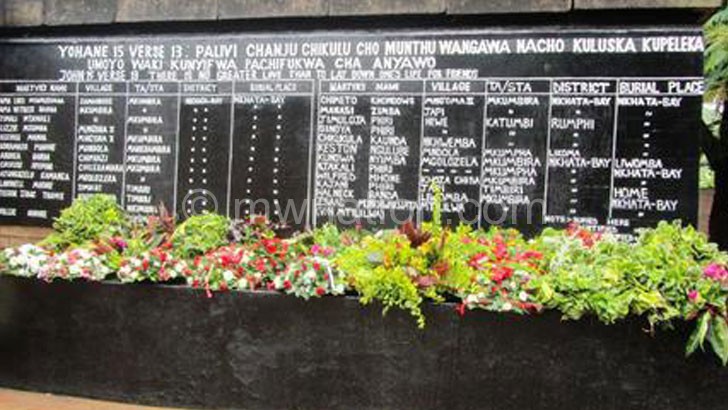Chaponda’s fate should serve as precedent
Hon Folks, APM fired Minister of Agriculture George Chaponda a day after the Anti-Corruption Bureau (ACB) swooped on over K166 million in different currencies during a search and seize at his house in Lilongwe.
The dismissal came while ACB was probing Chaponda, Admarc management and a local company Transglobe, for possible corruption in their roles in a botched multi-billion kwacha Zambia maize deal.
On Wednesday, BBC called Minister of Justice Samuel Tembenu, seeking an official explanation for Chaponda’s fall. Tembenu said so far there’s no charge against Chaponda, implying he is innocent.
BBC then wanted to know if it’s illegal here for a person to keep a lot of money in their house. The Minister answered that it’s not necessarily so.
Then why has the President fired Chaponda? Tembenu said to allow for smooth investigations by ACB. How I wish APM made this a policy for his administration!
All along, commuting between ACB offices and one’s own office in a Ministry, Department or Agency was normal. Even an arrest per se hasn’t been sufficient grounds for having a name removed from the payroll. The argument has always been that in law, a person is presumed innocent until proved guilty by the courts.
BBC played a clip in which Chaponda, an Ivy League legal scholar, used that argument to justify why he was still a minister after an inquiry instituted by the President had recommended that he should be investigated for corruption.
In fact, there’s a good reason to believe that even APM himself, another Ivy League legal scholar, shared the same point of view. His initial reaction to the recommendation that Chaponda should be investigated by ACB for corruption was essentially dismissive, regarding as proof that the inquiry had yielded nothing conclusive.
He even went as far as describing the issue of Maizegate as “false”, “useless” and a waste of time and resources. He also tried to have Chaponda reinstated as Leader of the House, a move only thwarted by the opposition who vehemently rejected to recognise him.
It’s likely that APM also felt emboldened by an earlier Supreme Court vacation of an injunction suspending Chaponda from the Cabinet, saying only the President has the mandate to hire or fire Cabinet members.
The question still remains: why did APM make a U-turn on Chaponda, dismissing him from Cabinet when the ACB hasn’t even slapped him with a single charge? There are also the hackneyed questions steeped in the rights of the individual: what if ACB finds him with no case to answer? What if the courts acquit him?
Our leaders have used these excuses to let their cronies with broken reputation continue to exercise powers of the State. The best interests of the individual in the privileged position of power were being placed above the public interest to have in leadership positions people of high integrity and credibility.
Interestingly, cases abound of Cabinet members who over the years have wantonly violated Section 88(5) of the Constitution, forbidding the use of public office for personal gains or allowing a situation where their material interests are in conflict with duties and responsibilities of their offices.
We have been haunted by an entrenched culture of high-level corruption which in the early days of the multiparty dispensation was substantially contributing to the national corruption rate of 30 percent against Sadc average of 20 percent. Now the high-level crooks have raised the corruption bar to Cashgate proportions, resulting in donors and investors shunning our economy.
In such situations it’s only right for the President to raise the integrity bar for the lucky few his Cabinet and top positions in the public sector by making a probe by ACB or any other legally instituted state agency grounds for a dismissal.
Alternatively, people in high places such as Chaponda should learn to resign when their positions are so compromised as to become untenable. This is a standard practice in functional democracies.




